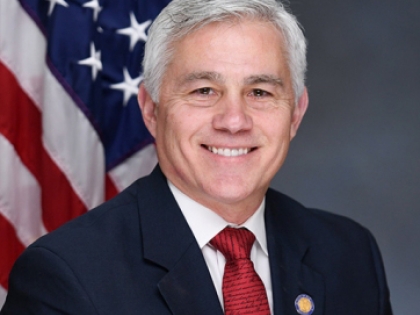
SENATORS FLANAGAN, LAVALLE, AND ANTONACCI SAY A RESPONSIBLE BUDGET INCLUDES RESTORATION OF STATE HOSPITAL AID
Robert E. Antonacci II
March 19, 2019
-
ISSUE:
- 2019-20 Executive Budget
March 19, 2019 - Senators John Flanagan, Ken LaValle, and Robert Antonacci are demanding restoration of aid to State Hospitals that was intentionally omitted from last week’s Senate Democrat Budget Resolution. The Senators maintain that the NY City-dominated Budget Resolution has tremendously misplaced priorities, from greatly increasing taxes by $2 billion this fiscal year, to eliminating funding for crucial items, like support for the State Hospitals. Funding for health care is a wise investment for the long-term well-being of our residents, and should remain a high priority.
The Senators said that providing a proper operating subsidy for State Hospitals is crucial at a time when access to affordable, quality healthcare remains a top priority at all levels of government. There is a tremendous need for meaningful tax relief and a permanent cap on New York State spending, along with the correct utilization of state funding. They assert that the State can spend less and protect taxpayers, while investing in our shared priorities.
Despite the Senators voicing strong opposition to the exclusion of the funds, the Budget Resolution was approved with a nearly $90 million cut from the State regional hospitals. Senators Flanagan, LaValle, Antonacci and their entire conference were united in voting against the budget resolution.
Senator John Flanagan said, "The Governor and Legislature can put together a responsible budget that controls spending, protects taxpayers, and still invests in critical priorities like top-notch, affordable health care for Long Island. SUNY Stony Brook University Hospital provides extraordinary services to the families of the 2nd Senate district and beyond, and is an economic engine for Suffolk County. It defies belief that the Senate Democrats would raise taxes by $2 billion and still refuse to fund these outstanding SUNY hospitals in their budget resolution."
Senator Ken LaValle said, “We are demanding the restoration of the subsidy for SUNY Hospitals in the final State Budget as well as capital funding. SUNY Stony Brook University Hospital and its network provide critically important medical care to the residents throughout my Senate District. Restoring the aid is central to the mission of providing quality, affordable health care for our residents.”
Senator Robert Antonacci said, “Support for SUNY Upstate Medical is both a critical and wise investment. It is one of the largest employers in the 50th Senate District and provides quality healthcare for local residents, including various areas of specialties such as its cancer center. SUNY Upstate also provides a more economical alternative for many New York State residents who seek a medical degree. For this reason, SUNY Upstate is and will continue to be a shared priority for my colleagues and I.”
The State University of New York Hospitals, Upstate, Downstate, and Stony Brook Medicine, are cutting-edge research and teaching institutions that continue to graduate top-notch doctors desperately needed in our communities. Along with providing both preventative and inpatient care, SUNY Hospitals also act as economic engines for their respective regions of the state.
In prior years, the State Budget has provided approximately $87.9 million as an operating subsidy to the three SUNY Hospitals. Recognizing the importance of these institutions, the Legislature historically would increase the amount of funding over the Executive’s proposal by approximately $18 million. This increase insured that State Hospitals were able to continue serving those most in need, grow important services, and thrive in an increasingly competitive healthcare marketplace.
At a time when we are asking more and more of SUNY Hospitals, which are among the largest employers in their regions, it is unfathomable that we would completely cut their operating subsidy. The State must continue its commitment to keeping SUNY hospitals economically viable, educating doctors that will stay and treat patients here in New York, and ensuring safety net medical services for those most in need.
#####